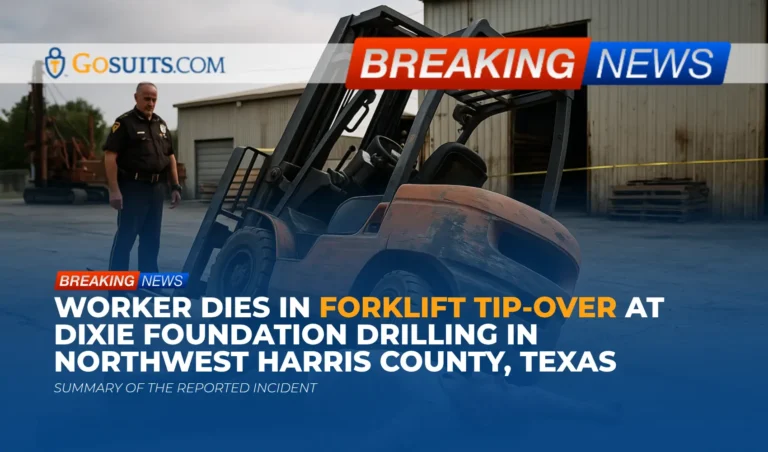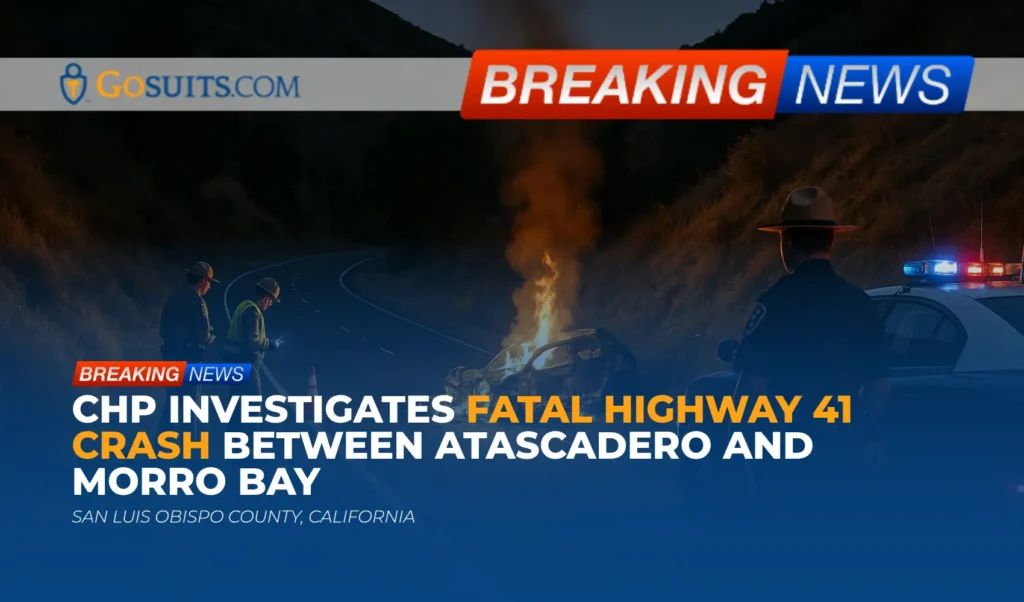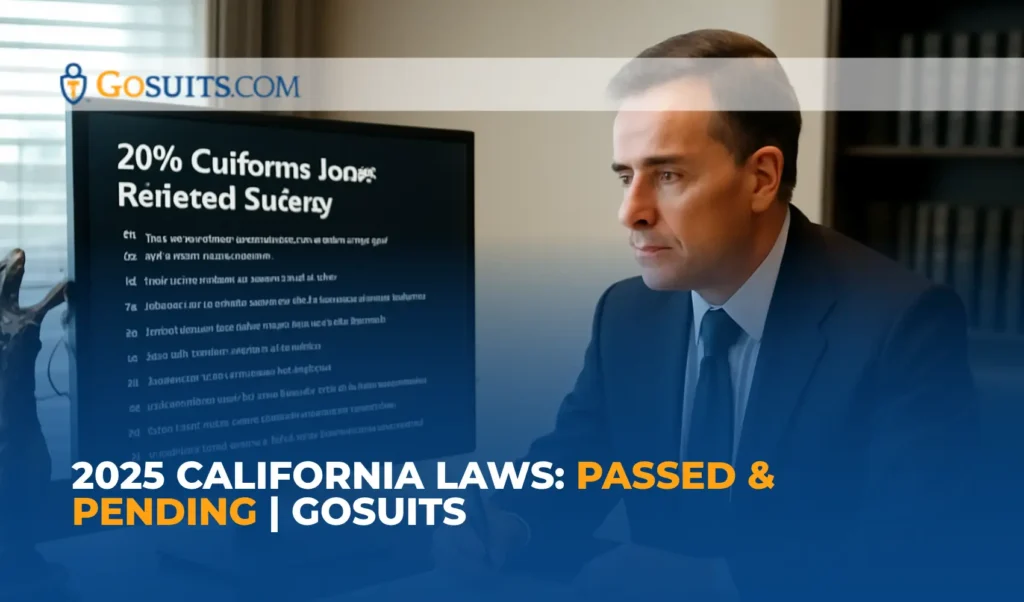- Summary of the Reported Incident
- What We Know So Far From Authorities
- Forklift Tip-Over Risks and Safety Standards
- Who Investigates a Workplace Fatality Like This
- Documents and Records Families Can Request and Where
- Potential Civil Claims and Liability Considerations in Texas
- Insurance, Workers’ Compensation, and Benefits Overview
- Preserving Evidence and Practical Steps
- Timelines and Deadlines in Texas Civil Cases
- Community Safety Takeaways for Workplaces
- Why Immediate Action Matters
- Commentary from Gosuits Harris County, Texas Personal Injury Attorney
Summary of the Reported Incident
Authorities report that a worker in his 50s died after a forklift overturned on him at a Northwest Harris County business on October 21, 2025. The incident occurred around 3:45 p.m. at Dixie Foundation Drilling, located in the 5400 block of Killough Street, just off Antoine Drive. Surveillance video reportedly showed the forklift beginning to collapse while the worker was moving a heavy item. Emergency medical personnel found the worker outside the building, and he was pronounced deceased at approximately 4:12 p.m.
Initial details shared publicly indicate the worker was a licensed forklift operator. The Harris County Sheriff’s Office took the call and responded to the scene. At this early stage, the precise cause of the tip-over and the full sequence of events have not been released.
What We Know So Far From Authorities
Based on early statements attributed to law enforcement, a caller reported that a worker “flipped” in the forklift. Surveillance footage reportedly captured the forklift starting to collapse onto the operator while he was moving something heavy. The man, a trained operator, did not survive.
In incidents like this, additional agency notifications are typical. Employers are required to report a work-related fatality to the Occupational Safety and Health Administration (OSHA) within 8 hours of learning of the death. OSHA’s reporting requirements are summarized here: OSHA Fatality Reporting. It is common for OSHA to open an inspection following a workplace fatality, and those inspections can involve interviews, document reviews, and examination of equipment and conditions.
Because this event occurred in Harris County, the county medical examiner’s office generally handles the medical investigation into the cause and manner of death. In Harris County, that role is performed by the Harris County Institute of Forensic Sciences.
Forklift Tip-Over Risks and Safety Standards
Forklifts are powerful, essential machines in industrial settings, and tip-overs are among the most dangerous events an operator can experience. Federal workplace safety rules recognize this and set out detailed training and operation standards for powered industrial trucks. Key OSHA standards include the following:
- Operator training and evaluation: Employers must ensure operators are trained, evaluated, and competent to operate the specific type of truck, as required by OSHA’s Powered Industrial Trucks standard at 29 CFR 1910.178.
- Equipment condition and maintenance: Trucks must be maintained in a safe operating condition, and unsafe equipment must be removed from service until repaired. See OSHA Powered Industrial Trucks.
- Load handling: Operators must handle loads within the equipment’s rated capacity, keep loads stable and low while moving, and avoid sudden turns or uneven surfaces that can affect stability.
OSHA and the National Institute for Occupational Safety and Health (NIOSH) have long warned that tip-overs are a leading cause of forklift operator deaths. NIOSH has previously reported that overturns are the single most common fatal event for forklift operators, and it has issued prevention guidance emphasizing the importance of load stability, proper speed, use of operator restraints, and attention to ramps, grades, and surface conditions. See NIOSH’s safety guidance for forklift operations here: NIOSH: Preventing Injuries and Deaths of Workers Who Operate or Work Near Forklifts.
While the full facts in this incident are still being developed, widely recognized contributors to tip-overs include unstable or oversized loads, turning with an elevated load, traveling on uneven or sloped surfaces, excessive speed, and mechanical failure. Investigation findings typically focus on how these known risk factors were controlled.
Who Investigates a Workplace Fatality Like This
Multiple agencies and entities can be involved in a workplace fatality investigation:
- Local law enforcement: The Harris County Sheriff’s Office responded and may generate an incident report documenting the scene, witness statements, and initial observations.
- Medical examiner: The Harris County Institute of Forensic Sciences generally conducts the medical investigation, determines cause and manner of death, and produces autopsy and toxicology reports when appropriate. See the institute’s public information pages at Harris County Institute of Forensic Sciences.
- OSHA: OSHA commonly conducts a workplace safety inspection after a fatality, reviewing training, supervision, equipment, maintenance, and compliance with federal standards. Inspection outcomes, including citations, become public. OSHA’s enforcement and inspection resources are available here: OSHA Inspections.
- Texas Division of Workers’ Compensation (DWC): If the employer is a subscriber to the state workers’ compensation system, the DWC administers benefits and may gather information relevant to benefit claims. See Texas Division of Workers’ Compensation.
These investigations proceed on different timelines and serve different purposes. Law enforcement focuses on the immediate incident response; the medical examiner determines medical causation; OSHA evaluates workplace safety compliance; and DWC processes benefit claims if applicable.
Documents and Records Families Can Request and Where
Official records often help a family understand what happened and can be important for insurance claims or potential civil actions. The following records are commonly available, subject to legal restrictions and timing:
Incident and investigative reports
- Harris County Sheriff’s Office records: Request incident reports through the Texas Public Information Act. Guidance on making public information requests is published by the Texas Attorney General at Open Government in Texas. Some incident reports may be available after initial investigative needs are met.
Autopsy and medical examiner records
- Autopsy report, cause and manner of death: The Harris County Institute of Forensic Sciences provides information about records, next of kin, and the process for requesting autopsy reports on its official site: Harris County Institute of Forensic Sciences. Availability can depend on the status of investigations.
- Death certificate: Obtainable through the Texas Department of State Health Services Vital Statistics. Instructions and eligibility criteria are here: Texas Vital Statistics.
OSHA records
- Fatality reporting and inspection records: OSHA publishes inspection outcomes and citations after cases are resolved. Members of the public can review enforcement information and, when necessary, make a Freedom of Information Act request. See OSHA Inspections and OSHA FOIA.
Workers’ compensation claim documents
- Death benefit claim materials: If the employer is a subscriber to workers’ compensation, certain family members may qualify for death benefits. The Texas Division of Workers’ Compensation provides program information here: Texas DWC Death Benefits.
Each record type has its own processing time. It is helpful to note dates, case numbers, and the exact agencies involved when making requests.

Potential Civil Claims and Liability Considerations in Texas
Every incident turns on specific facts, and investigations take time. Still, some general legal frameworks often apply to fatal workplace forklift incidents in Texas. The points below are general information, not legal advice.
Employer status: workers’ comp subscriber or nonsubscriber
- Subscriber employers: If an employer carries Texas workers’ compensation insurance, that coverage is generally the exclusive remedy for negligence claims by employees. However, Texas law allows certain wrongful-death beneficiaries to pursue exemplary damages upon proof of gross negligence in cases of employee death. See Texas Labor Code exclusive remedy provisions at Labor Code §408.001.
- Nonsubscriber employers: Texas permits employers to opt out of workers’ compensation. In a nonsubscriber case, an injured worker or family can bring a negligence claim against the employer, and by statute, the employer loses some common-law defenses. See Labor Code §406.033.
Third-party liability
- Equipment manufacturer or maintenance contractor: If a forklift or attachment failed due to a defect or negligent maintenance, claims may be considered against responsible third parties.
- Property owner or general contractor: On multi-employer worksites, entities responsible for site safety or conditions could be evaluated for potential negligence depending on control and knowledge.
- Load originator: In some scenarios, a third party that prepared, loaded, or rigged the material may be examined if improper loading contributed to instability.
Safety standards as evidence
- OSHA regulations and industry practices: Compliance with standards such as 29 CFR 1910.178 and adherence to employer rules, training logs, maintenance records, and hazard assessments can play a role in allocating responsibility.
Because the public report notes “surveillance video showed the forklift start to collapse,” prompt preservation of that footage and any equipment data is crucial. Responsibility can involve multiple actors, and it is fact-intensive.
Insurance, Workers’ Compensation, and Benefits Overview
In Texas, the insurance landscape after a workplace fatality can be complex, particularly because employers may or may not subscribe to the state’s workers’ compensation system.
- Workers’ compensation death benefits: If covered, certain family members may qualify for weekly death benefits and burial benefits under Texas law, administered through the Texas Division of Workers’ Compensation. Program information is available here: Texas DWC Death Benefits.
- Employer liability insurance: In nonsubscriber settings, employers may carry other liability policies responsive to negligence claims. The existence and scope of coverage vary.
- Third-party liability insurance: Manufacturers, contractors, and property owners frequently have their own liability coverage that may be implicated if a third party’s negligence contributed to the event.
Insurance carriers often reach out quickly after serious incidents. Before providing a statement or signing documents, it is wise to understand one’s rights. Communications to insurers can be used later in ways that affect claims. A consultation with a qualified attorney before speaking to any insurance representative helps ensure accurate, complete information is provided in an appropriate manner.
Preserving Evidence and Practical Steps
Preserving evidence early can be pivotal in understanding what happened and protecting legal rights. The steps below are general suggestions for consideration:
- Identify and preserve video: Surveillance video reportedly captured the forklift collapsing. Video systems may overwrite data within days or weeks. A prompt written preservation request to the employer and any third-party security vendor can help prevent loss.
- Secure equipment and attachments: The specific forklift, forks or attachments, and any load-handling equipment should be preserved for inspection. Maintenance logs, repair tickets, and pre-shift inspection checklists are often critical.
- Document the scene: Photos of floor conditions, slopes, obstacles, lighting, and signage can matter in a tip-over analysis.
- Collect training and supervision records: OSHA requires operator training and periodic evaluations. Documents showing training content, dates, and instructor qualifications can shed light on compliance.
- Identify witnesses: Names and contact information for coworkers or other observers should be recorded while memories are fresh.
- Request official reports: See the section above for obtaining incident, autopsy, OSHA, and vital records.
If an insurance carrier requests a statement or authorization, consider consulting an attorney first. Statements given early, without full information, can be incomplete and may be used later to challenge claims.
Timelines and Deadlines in Texas Civil Cases
Texas law imposes deadlines for bringing civil claims. While every case turns on its facts, certain general timelines are important to know:
- Wrongful death and survival claims: Typically must be filed within two years of the date of death, subject to limited exceptions. See Texas Civil Practice and Remedies Code limitations periods at CPRC §16.003.
- Notice requirements: Special notice rules can apply when claims involve governmental entities or certain third parties under contract, sometimes requiring written notice within months. Timely evaluation is essential.
- OSHA investigations: Employers must report fatalities within 8 hours, and OSHA inspections often begin quickly. Families seeking information from OSHA may need to wait until an inspection concludes for certain records to be released.
Because multiple deadlines can run simultaneously, early review by a knowledgeable professional can clarify which dates apply and how to protect rights.
Community Safety Takeaways for Workplaces
Forklift operations are routine at industrial sites, yet the risks are serious and well known. Key safety lessons widely promoted by OSHA and NIOSH include:
- Respect load limits and stability: Always operate within the rated capacity of the forklift and attachments. Keep loads low while moving, avoid sudden turns, and reduce speed, especially on uneven or sloped surfaces. See OSHA Powered Industrial Trucks.
- Use restraints and follow procedures: Operator restraints, where equipped, are a critical defense in tip-overs. Training must be specific to the equipment type and the conditions of the workplace, per 29 CFR 1910.178.
- Maintain equipment and perform pre-shift checks: Remove defective equipment from service until repairs are completed and documented.
- Plan for unusual loads: Oversized or heavy items may require special attachments, spotters, alternative handling methods, or engineered lift plans to maintain stability.
- Control the environment: Mark slopes, repair floor defects, manage traffic, and ensure adequate lighting and visibility.
- Empower stop-work authority: Encourage workers to pause operations when conditions change or stability is uncertain.
These measures are not theoretical; they reflect longstanding consensus on preventing the very hazard that appears to have occurred here.

Why Immediate Action Matters
After an industrial fatality, time-sensitive steps can affect both clarity about what happened and the ability to pursue available remedies. The following focuses on concrete, practical actions and why they matter:
- Pin down employer coverage status: Determine promptly whether the employer is a workers’ compensation subscriber in Texas. This single fact changes the legal landscape, available claims, and procedural steps. The Texas Division of Workers’ Compensation provides resources for understanding benefits and employer coverage.
- Send evidence preservation notices: Video systems overwrite, equipment gets repaired, and scenes change. Written preservation requests help ensure surveillance video, forklift data, maintenance logs, and training records remain intact for review.
- Obtain official records as they become available: Incident reports, autopsy findings, and OSHA inspection outcomes provide objective anchors for understanding the event. Knowing when and where to request these documents prevents delays.
- Coordinate communications with insurers: Before providing recorded statements or signing authorizations, obtain a free consultation with a qualified attorney to understand rights and obligations. What is said to an insurance company can be used later to limit or dispute claims.
- Track deadlines: Texas civil statutes of limitation, workers’ compensation filing windows, and special notice requirements can cut off claims if missed. Starting early avoids last-minute challenges.
- Assess all potential parties: Beyond the direct employer, consider whether a property owner, general contractor, equipment manufacturer, or maintenance provider might have contributed. Early, accurate identification helps avoid missed claims.
Taking these steps early yields practical benefits: it preserves key proof, reduces the risk of avoidable disputes, and positions any insurance or civil claim on a foundation of reliable facts.
Commentary from Gosuits Harris County, Texas Personal Injury Attorney
Our hearts are with those affected by this tragedy in Northwest Harris County. A worker left for his shift and did not return home. This commentary is offered for educational purposes and general information to help the community understand the processes that typically follow a workplace fatality and the issues that may arise.
From a personal injury lawyer’s perspective, forklift tip-overs are among the most feared industrial incidents because they happen quickly and often with catastrophic results. The early report that surveillance video captured the forklift beginning to collapse underscores how important immediate evidence preservation will be. In our experience with serious industrial incidents, the questions that most often need clear, documented answers include: Was the load within capacity? Were the forks or attachments suitable? What were the ground conditions and slope? What training, supervision, and pre-shift inspections were in place? And was the equipment maintained and operating as designed? These are not academic details—they are the backbone of understanding how a tip-over occurred and whether safety rules were followed.
Insurance companies and large corporations typically mobilize quickly after a fatal incident. Their adjusters and investigators know the rules, the timelines, and how statements can shape a case. Without context, well-intentioned statements can be incomplete or misunderstood. We often see insurers seeking broad medical or employment authorizations, recorded statements, or early settlements before all facts are known. This can place families at an information disadvantage. Being cautious and informed about communications with insurers helps maintain control over the process.
Obtaining a free consultation before speaking with any insurance company can make a meaningful difference. A consultation can help identify the employer’s workers’ compensation status, explain how Texas’s subscriber and nonsubscriber frameworks differ, and outline the role of third parties such as equipment manufacturers or site contractors. It also helps ensure early steps—like sending preservation notices for video and equipment—are handled promptly. Speaking with a seasoned attorney before engaging with insurers provides clarity about rights and obligations without committing to any course of action.
For those seeking official documentation in Harris County:
- Autopsy and cause of death: Harris County Institute of Forensic Sciences provides information about requesting records at ifs.harriscountytx.gov.
- Death certificates: Texas Department of State Health Services Vital Statistics offers application instructions and eligibility at dshs.texas.gov/vital-statistics.
- OSHA reporting and inspections: Federal reporting rules and inspection materials are available at osha.gov/recordkeeping/reporting and osha.gov/inspection.
- Public information requests: Guidance on how to request law enforcement records is available from the Texas Attorney General at texasattorneygeneral.gov/open-government.
- Workers’ compensation benefits: The Texas Division of Workers’ Compensation provides death benefit information at tdi.texas.gov/wc/employee/death.html.
- Forklift safety standards: OSHA’s Powered Industrial Truck standard is at osha.gov/laws-regs/regulations/standardnumber/1910/1910.178, and NIOSH’s forklift safety alert is at cdc.gov/niosh/docs/2001-109/.
We extend our sincere condolences to the family and coworkers affected by this loss. The path forward involves careful fact gathering, patient review of official findings, and informed decisions about any insurance or civil claims. Free consultations exist to help people understand their options at no cost and without commitment, and they can be sought before interacting with insurance representatives.






